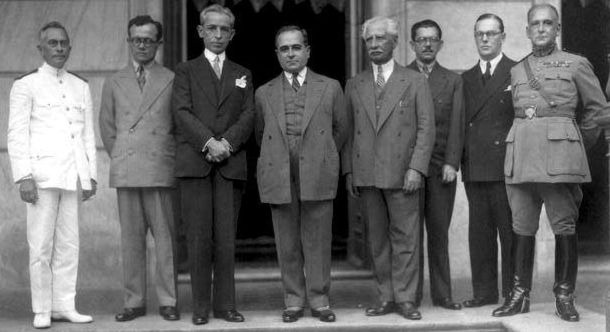Getulio Vargas it was the ruler who turned labor policy into a form of social and political control. Inspired by the model fascistItalian, Vargas sought to control the mass of urban workers, especially those linked to the country's growing industrialization, through labor legislation, such as the CLT (Consolidationof thelawsinWork – or from the Work laws), decreed on May 1, 1943.
► Labor Policies in the Vargas Era
One of the main features of WasVargas (1930-1945) was the promotion of structural transformations in the economic sector, with investment in basic industries, such as steel, metallurgy and the energy sector. As a social-political measure to accompany this characteristic in the economic sphere, Vargas prioritized the issue of legislation related to labor. The goal was twofold, as historians Heloisa Starling and Lilia Schwarcz demonstrate:
[…] In one (part of the proposal), (Vargas) created laws to protect workers – eight-hour workday, regulation of the work of women and minors; vacation law, institution of the work card and the right to pensions and retirement. In the other, it repressed any effort to organize workers outside the control of the State – it smothered, with particular violence, the actions of the communists. To complete it, it ended autonomous unionism, framed the unions as collaboration bodies with the State and excluded rural workers' access to the benefits of legislation protecting the work. [1]
The inspiration for Vargas' measures came from the corporate state model developed by the leader of Italian fascism, BenitoMussolini. It was with the Work Charter (Lavoro's Letter), from 1927, that Mussolini managed to control the workers' unions and keep the possibility of insurgency with a communist or anarchist bias – very frequent in Italy at the beginning of the 20th century. The Labor Charter influenced not only Brazil, but also Turkey and Portugal.
► Decree-Law No. 5. 452, of May 1, 1943
Do not stop now... There's more after the advertising ;)
The key document that put all the labor rules into effect was Decree-Law No. 5. 452, of May 1, 1943, which approved the Consolidation of Labor Laws. This decree-law had 922 articles and was signed by Getúlio Vargas and his minister of Labour, Industry and Commerce, Alexandre Marcondes Machado Filho. To exemplify the scope of the CLT in the scope of workers' lives, let us see article 60, which provides for cases of unhealthy activity:
In unhealthy activities, considered as those contained in the tables mentioned in the chapter "Hygiene and Safety at Work", or that in them come to be included by an act of the Minister of Labour, Industry and Commerce, any extensions can only be agreed upon with prior license of the competent authorities in matters of occupational hygiene, which, for this purpose, will carry out the necessary local examinations and the verification of the methods and work processes, either through federal, state and municipal health authorities, with whom they will come to an understanding for such an end.
It is noteworthy that other measures o new state started to implement in order to strengthen control over the mass of workers. Among these measures were the great commemorations of Labor Day, on May 1st – the same day as the CLT decree-law – and the exaltation of the Vargas regime through radio and cinema.
GRADES
[1] Schawrcz, Lilia M. and Starling, Heloisa M. Brazil: A Biography. São Paulo: Companhia das Letras, 2015. P. 322. P. 362.
By Me. Cláudio Fernandes
Would you like to reference this text in a school or academic work? Look:
FERNANDES, Claudio. "Consolidation of Labor Laws in the Vargas Era"; Brazil School. Available in: https://brasilescola.uol.com.br/historiab/consolidacao-das-leis-trabalhistas-na-era-vargas.htm. Accessed on June 27, 2021.

